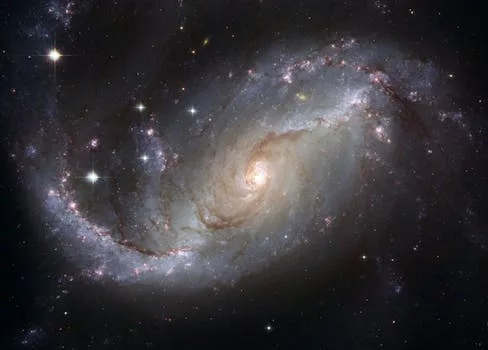
“
From Stardust to Dreams: Imagining Life Beyond the Stars
Introduction to Astrobiology
From Stardust to Dreams: Imagining Life Beyond the Stars is a journey through the vast expanse of the universe, seeking answers to humanity’s most profound questions: Are we alone? What is the origin of life? The field of astrobiology has emerged as a multidisciplinary approach to understanding the possibility of life beyond Earth. Astrobiologists explore the formation of stars, the conditions necessary for life, and the potential for extraterrestrial life.
The Formation of Stars and Planets
The formation of stars and planets is a complex process that involves the collapse of giant molecular clouds. These clouds, composed of gas and dust, collapse under their own gravity, spinning faster and faster. As they spin, they flatten into disks, with the star forming at the center. The leftover material in the disk can coalesce to form planets. The discovery of exoplanets, planets that orbit stars other than the Sun, has revealed that planet formation is a common process in the universe.
The Conditions for Life
For life as we know it, certain conditions must be met. These include the presence of liquid water, a stable and hospitable climate, and a source of energy. The search for extraterrestrial life, therefore, focuses on planets that orbit within the habitable zones of their stars, where temperatures are suitable for liquid water to exist. The discovery of exoplanets in habitable zones has heightened the possibility of finding life beyond Earth. For more insights, check out related explorations on this topic.
Searching for Extraterrestrial Life
The search for extraterrestrial life is an active area of research, with scientists using a variety of methods to detect signs of life. These include the detection of biosignatures, such as the presence of oxygen or methane in a planet’s atmosphere, and the search for radio signals that could indicate the presence of intelligent life. Missions like the Kepler space telescope and the forthcoming James Webb Space Telescope are designed to study the atmospheres of exoplanets and detect signs of life.
Conclusion and Future Directions
The journey from stardust to dreams is a testament to human curiosity and the desire to understand our place in the universe. As we continue to explore the cosmos and search for life beyond Earth, we are reminded of the vast mysteries that remain to be uncovered. The discovery of extraterrestrial life would be a profound moment in human history, challenging our understanding of the universe and our role within it.
Takeaways:
- Astrobiology is a multidisciplinary field that explores the possibility of life beyond Earth.
- The formation of stars and planets is a complex process that involves the collapse of giant molecular clouds.
- Certain conditions, including liquid water, a stable climate, and a source of energy, are necessary for life as we know it.
- The search for extraterrestrial life is an active area of research, with scientists using a variety of methods to detect signs of life.





